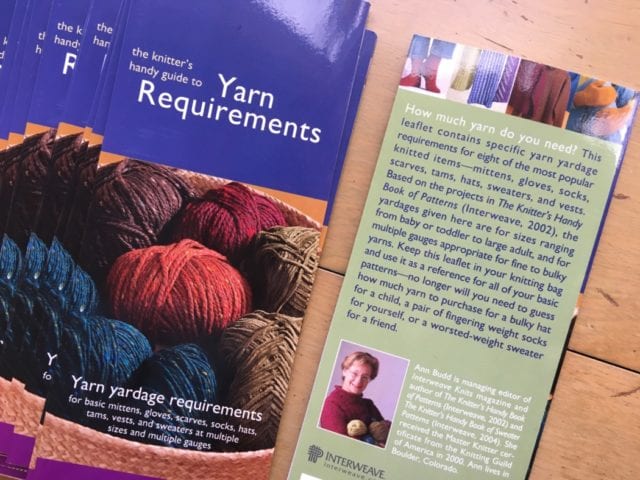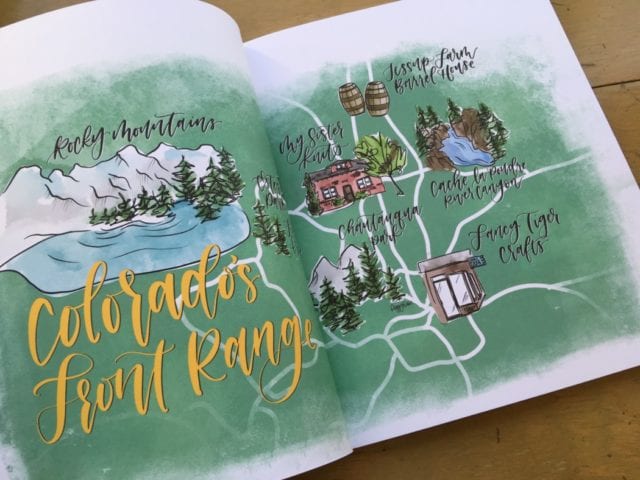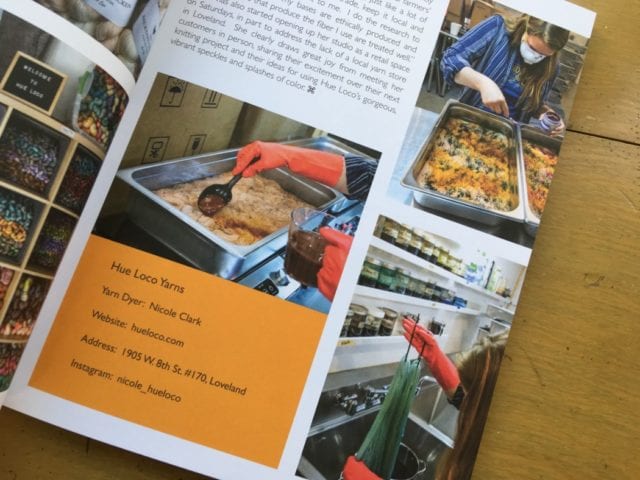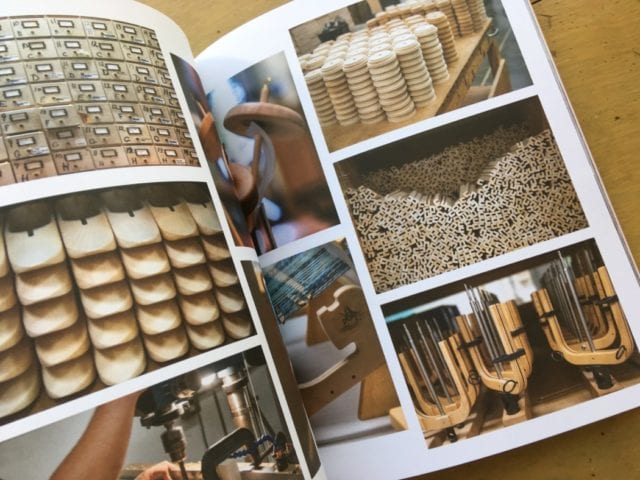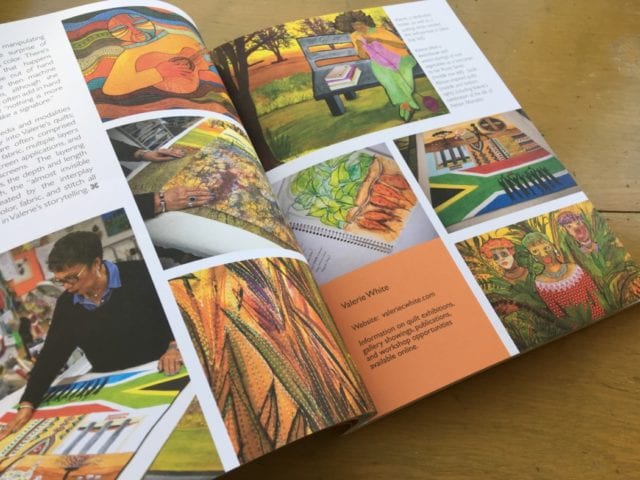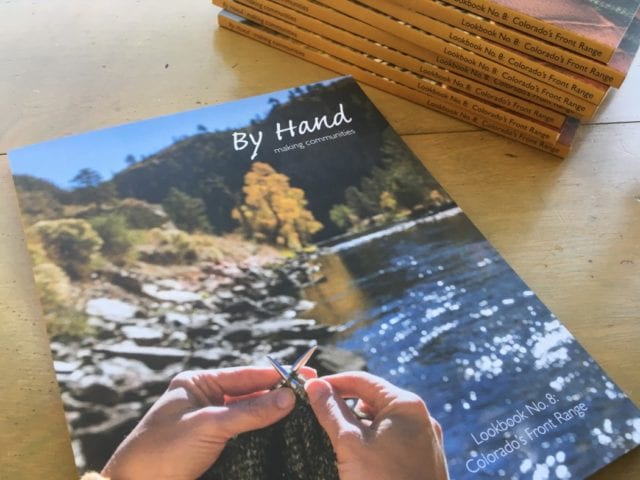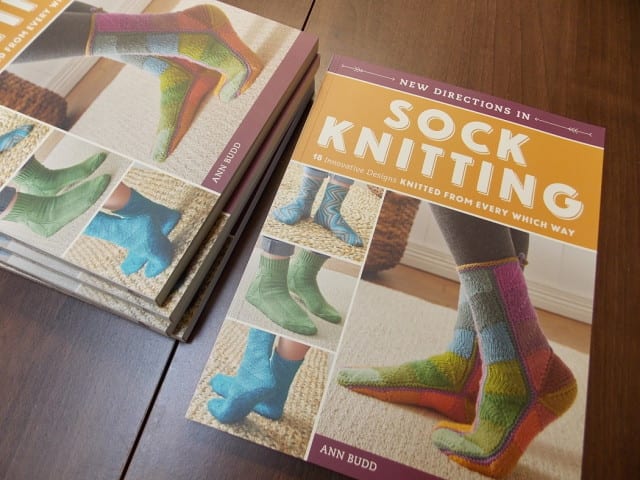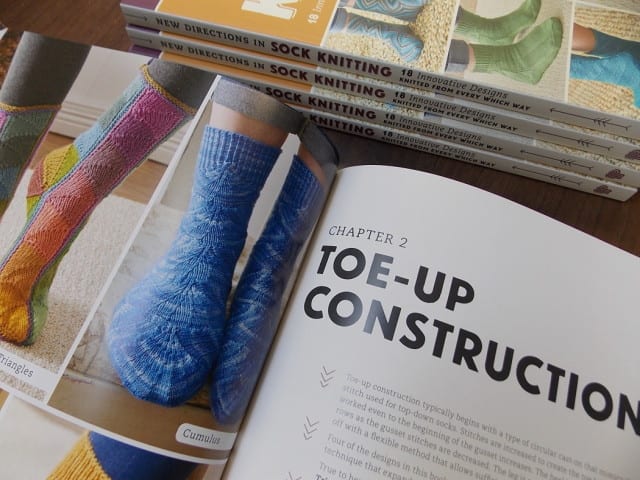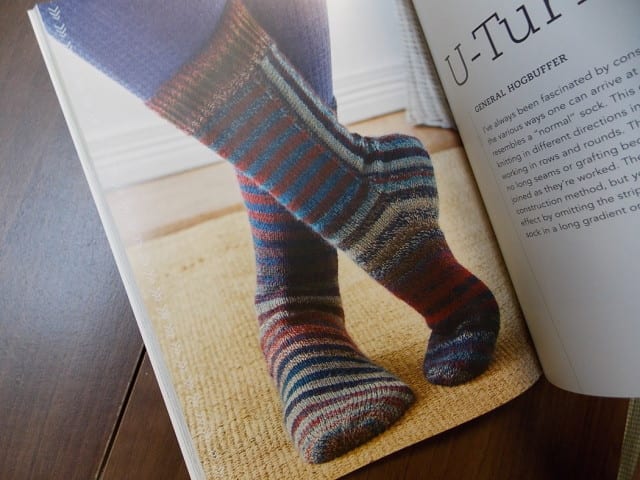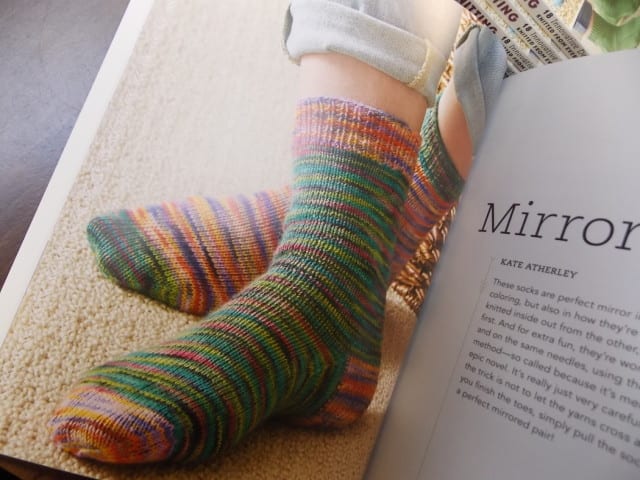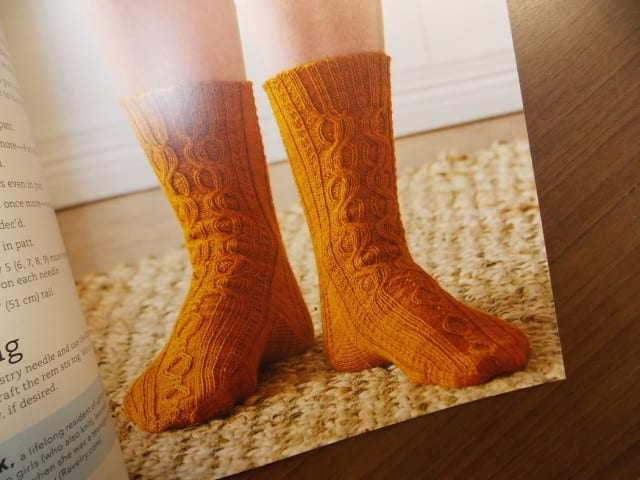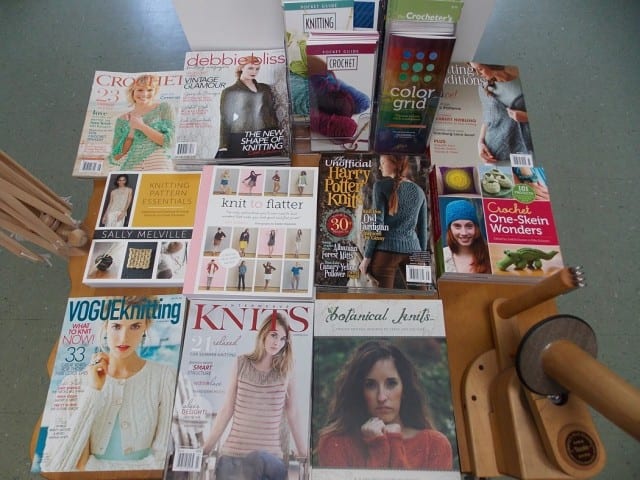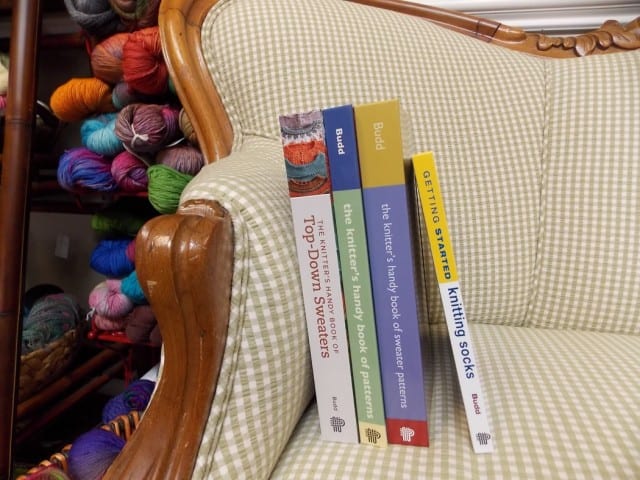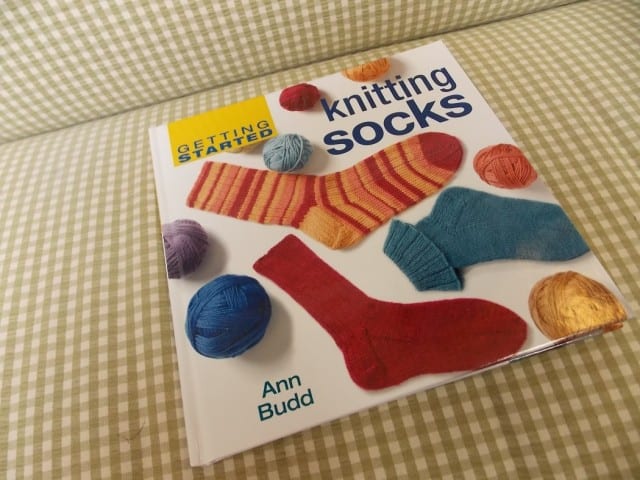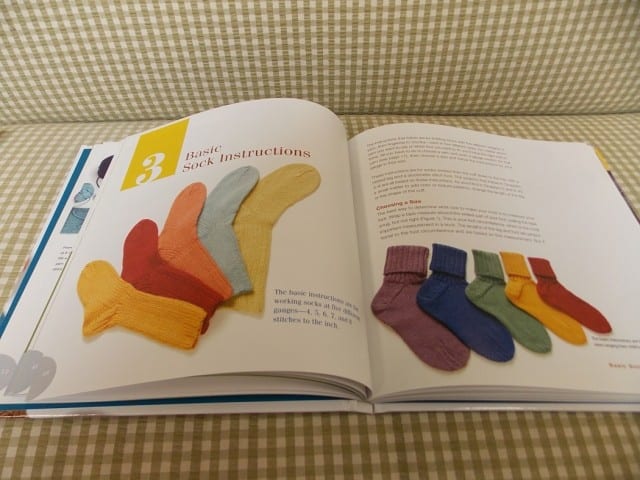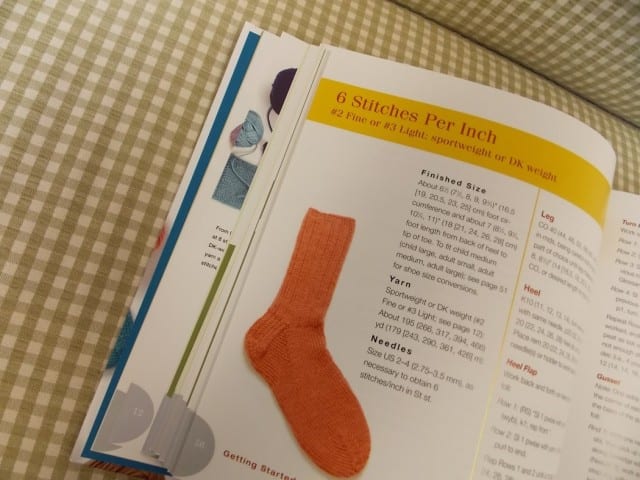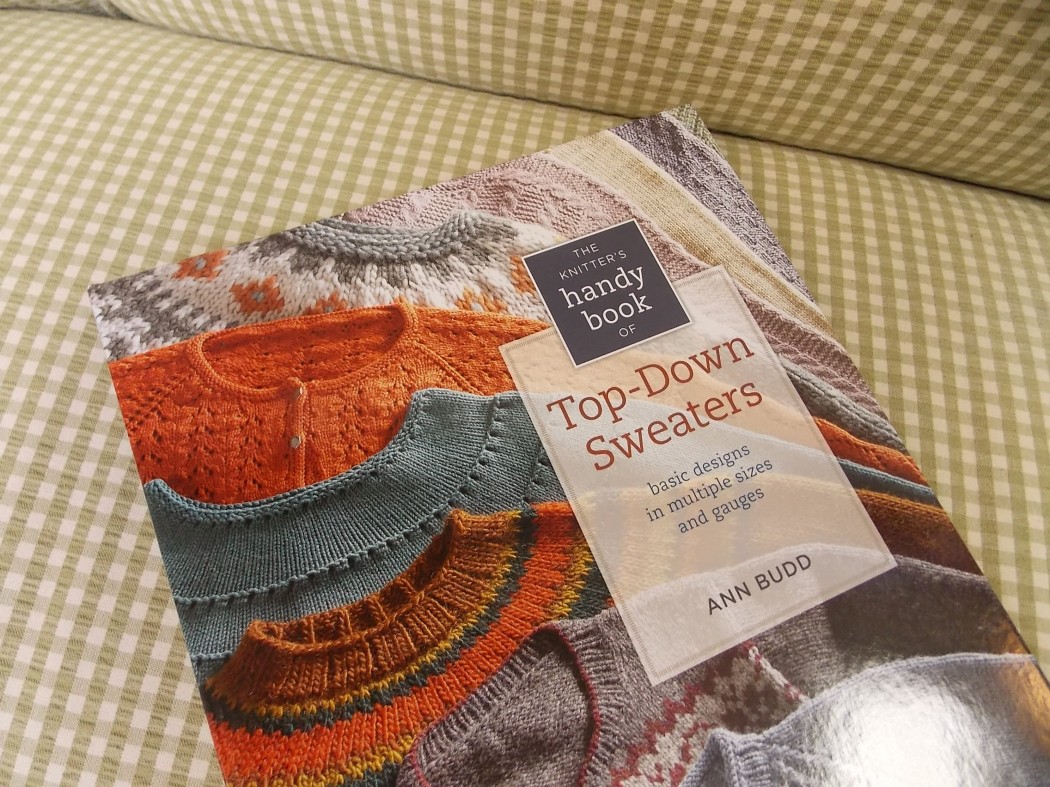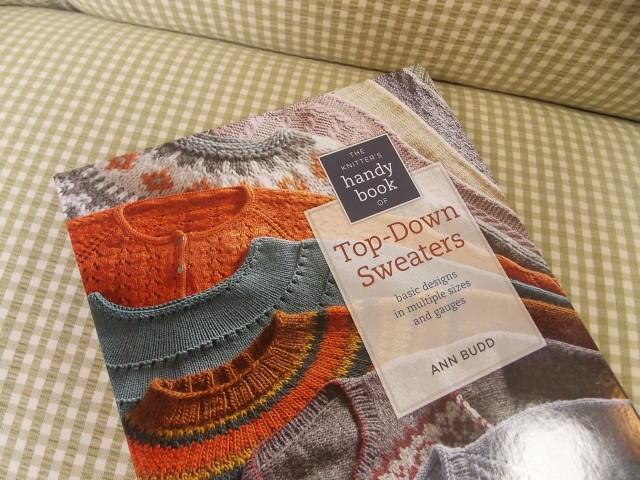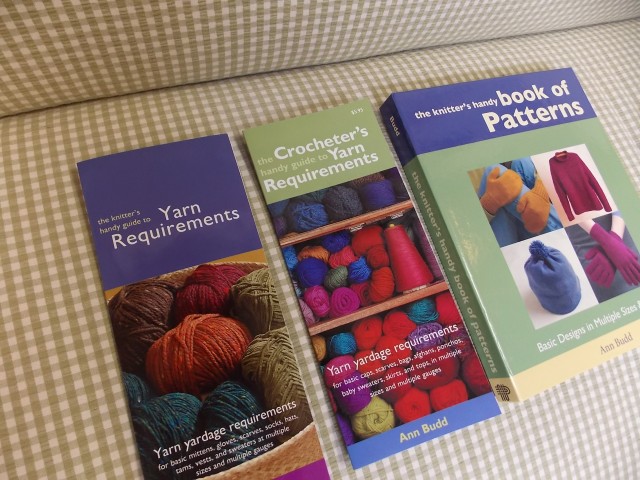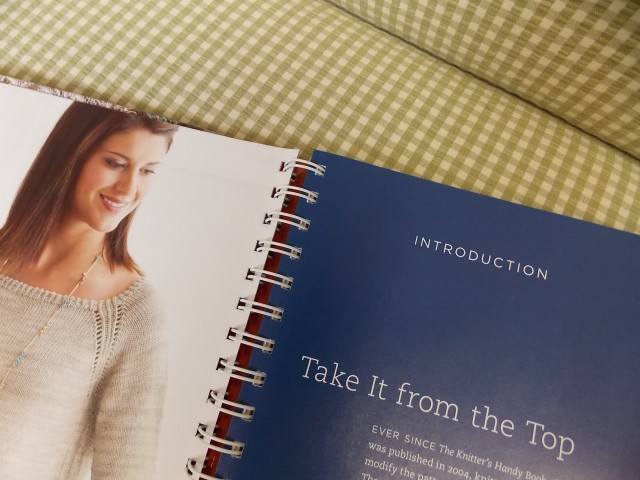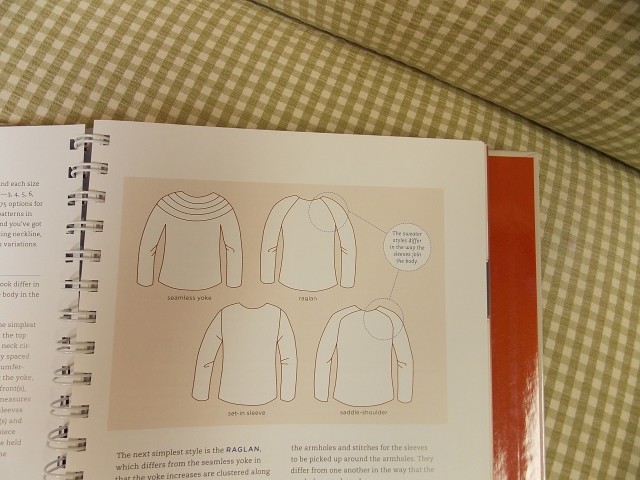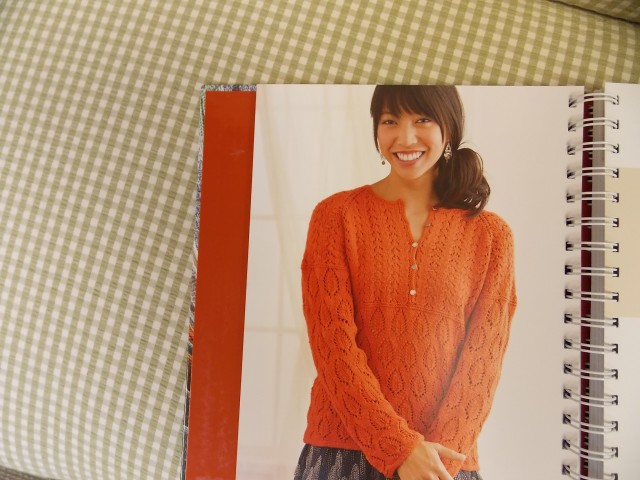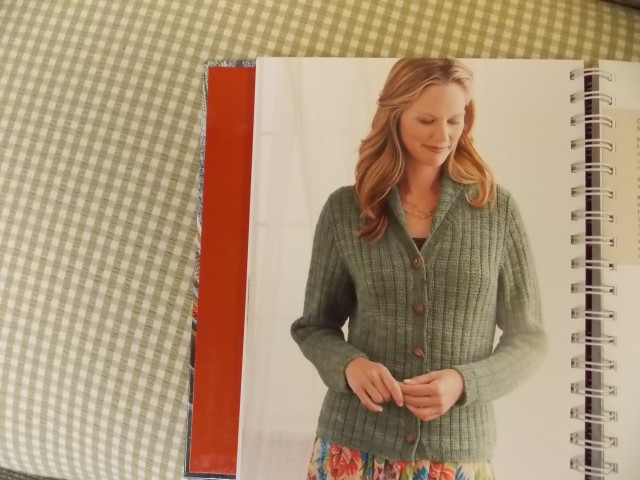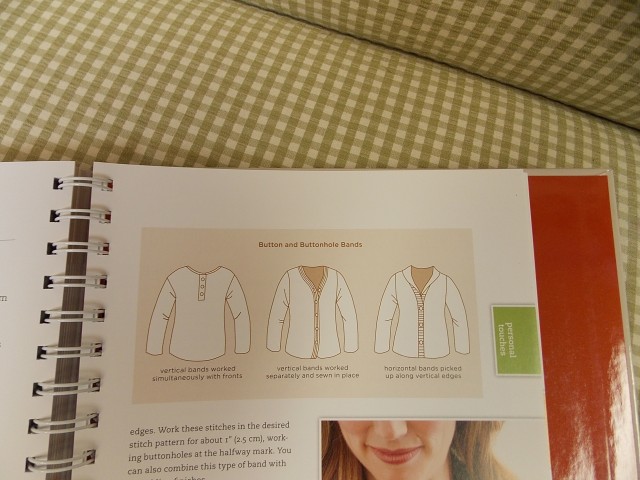Last week, Anne and I unpacked two boxes of books, almost all of which were new to the shop. We quickly made space on the teacart for them, and filled it even more quickly. As I’ve explained
here before and as regulars have come to expect, the teacart is reserved for the newest additions to the shop. Because of the great quantity of new titles, however, we’ve had to spread out our most recently acquired books. There are simply too many to squeeze onto one teacart. We decided instead to tuck them in wherever they would fit, which is all over the place. Let me point them out to you here.
Our books are loosely organized by theme, with similar books sharing a shelf. So our newest books on colorwork joined their friends on the colorwork shelf.
The newest sock knitting books found a home with the other sock books, with the sock yarns close at hand.
Knit Noro: 30 Designs in Living Color snagged a space with the Noro pattern booklets and other technique books that play well with Noro yarns–entrelac, brioche, etc. These books are in the Noro corner, just above the Noro yarns.
Our newest books, pictured and unpictured, in no particular order:
Sock Knitting Master Class, by Ann Budd
Socks for Sandals and Clogs, by Anna Zilboorg
The Essential Guide to Color Knitting Techniques, by Margaret Radcliffe
Norwegian Knitting Designs, by Annichen Sibbern Bohn
Alice Starmore’s Book of Fair Isle Knitting
Aran Knitting: New and Expanded Edition, by Alice Starmore
Charts Made Simple: Understanding Knitting Charts Visually, by JC Briar
Knit Socks! : 17 Classic Patterns for Cozy Feet, by Betsy McCarthy
Sock Club: Join the Knitting Adventure, by Charlene Schurch and Beth Parrott
How to Knit Socks: Three Methods Made Easy, by Jeanne Stauffer and Diane Schmidt
Knit Noro: 30 Designs in Living Color
Knit, Swirl!, by Sandra McIver
365 Crochet Stitches a Year: a Perpetual Calendar, by Jean Leinhauser and Rita Weiss
Armenian Knitting, by Meg Swansen and Joyce Williams
I’ve just picked up my copy of Alice Starmore’s Book of Fair Isle Knitting, which should keep me busy for quite some time, reading, admiring, and planning. Serious, beautiful knitting tomes like this one are by far my favorite kind. If you’re seeking some knit or crochet inspiration, my recommendation is the right book–one that excites as well as educates. Come by the shop to find it!


